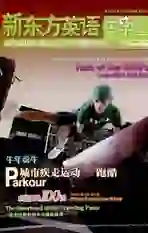盘点2008年高考英语单项填空考查热点
2009-06-29籍万杰
籍万杰
数词
英语中表达倍数常用下列句型:
1) A is three (four...) times the size (height/length/ width...) of B.
2) A is three (four...) times as big (high/long/wide...) as B.
3) A is three (four...) times bigger (higher/longer/ wider...) than B.
注意:用times表示倍数时,一般仅限于三倍或三倍以上的数,表示两倍可用twice或double。
【真题】Ten years ago the population of our village was __________ that of theirs. (陕西卷)
A. as twice large as B. twice as large as
C. twice as much as D. as twice much as
【解析】 B。表示两倍时,用twice或double;修饰population(人口)时,应使用large或small。
形容词
● 形容词作定语
单个形容词作定语时,通常放在所修饰的名词之前。但else修饰疑问代词或由some、any、 no与body、one、thing等结合而成的代词时,else要后置;以a-开头的表语形容词以及present(出席的,到场的)作定语时也需后置。
【真题】There are plenty of jobs ______ in the western part of the country. (浙江卷)
A. present B. available
C. precious D. convenient
【解析】B。四个选项中只有A、B两项可作后置定语。Available表示“可提供的”;present表示“在场的,出席的”,B项符合题意。
● 可修饰形容词原级和比较级的词
形容词比较级前可用much、far、by far、a lot、a great deal、a bit、a little、still、even、rather、any等修饰。形容词比较级前面也可以用no或not修饰,用no修饰时是对两个比较对象的否定,用not修饰时表示的是比较对象中的前者不如后者,如:John is not better than Tom. (约翰不如汤姆好。) John is nobetter than Tom. (约翰和汤姆一样不好。)但very、quite、fairly、so、too等词只能修饰形容词原级。
【真题】 You're driving too fast. Can you drive _______? (全国卷I)
A. more slowly a bit B. slowly a bit more
C. a bit more slowly D. slowly more a bit
【解析】C。考查比较级前修饰语的使用。本题的意思是:“你车开得太快了,能不能开慢点儿?”比较级more修饰slowly应放在前面,a bit是比较级more的修饰语,应放在more的前面,故答案选C。
●形容词(短语)作伴随状语
表示心理状态和感情色彩的一组形容词常可作伴随状语。
【真题】After the long journey, the three of them went back home, ______. (北京卷)
A. hungry and tiredly B. hungry and tired
C. hungrily and tiredly D. hungrily and tired
【解析】B。本题句意为:长途旅行后他们三人回家了,又累又饿。所给的四个选项中均使用了并列连词and,故and前后的词类应该一致,排除A和D项。由句式结构看,空格中填入的内容应作伴随状语使用,英语中形容词(短语)可作伴随状语使用,表示主语的状态,而副词不具备作此项功能,故选择B项。
介词
● 常用介词
从历年高考题不难看出,介词类考题常集中于一些常用介词,如:at、in、for、from、to、of、on、with、until、about、by、since、as、around、against、except、besides等。
【真题】Let's learn to use the problem we are facing _____________ a stepping-stone to future success. (全国卷I)
A. to B. for C. as D. by
【解析】C。考查介词短语use...as...“把……当作……使用”的固定搭配。
● 常用介词短语
英语中有一些固定的介词短语搭配,它们的结构和含义都是特定的,如because of、in case of、instead of、in place of、in spite of、due to、by means of、in exchange for等。
【真题】Many Chinese universities provided scholarships for students ______ financial aid. (天津卷)
A. in favour of B. in honour of
C. in face of D. in need of
【解析】D。句意为:许多中国大学向那些需要经济帮助的学生提供奖学金。D项in need of表示“需要”,符合题意。其他三个选项中,in favour of表示“支持”;in honour of表示“为了纪念”;in face of表示“面对”。
● 易混“动词+介词”搭配的区别
有一些搭配能力较强的动词(如come、bring、take、care、make、go、get、put、break等)与不同的介词搭配时,构成的短语意义不尽相同。
【真题】— When did you last hear ______ Jay?
— He phoned me this morning, and we agreed ______ a time and place to meet. (湖南卷)
A. of; to B. about; with
C. from; with D. from; on
【解析】D。此题考查动词hear和agree与不同的介词构成意义不同的词组的辨析。其中,hear about/of表示“听到有关……;听说”;hear from表示“收到……的来信,听说”;agree on表示“在……方面取得一致意见”;agree to表示“同意(计划、方案、安排等)”;agree with表示“同意某人(的意见)”。
时态、语态
要做好动词时态语态题,除了必须掌握各种时态的结构、含义和用法外,还要注意体会动词在具体的语言环境中的使用。语态通常结合时态一起考查,解题时一定要结合语境,弄清时间先后关系,可根据不同情况采取“找标法(寻找时间标志词)”、“呼应法(主从句时态呼应)”、“搭配法(固定搭配)”、“语境法(事情发生的环境)”等解题技巧。
【真题】 So far this year we ______ a fall in house prices by between 5 and 10 percent. (福建卷)
A. saw B. see
C. had seen D. have seen
【解析】D。运用“找标法”,定位题干中的时间标志词so far,可知该句的时态应为现在完成时,故选用现在完成时。
【真题】 The moment I got home, I found I _______ my jacket on the playground. (陕西卷)
A. had left B. left
C. have left D. was leaving
【解析】A。I found后接宾语从句,结合“呼应法”和“语境法”,由于主句动词使用了一般过去时,且宾语从句的动作发生在主句动作之前,应使用过去完成时。
【真题】—Did you watch the basketball match yesterday?
—Yes, I did. You know, my brother _______ in the match. (安徽卷)
A. is playing B. was playing
C. has played D. had played
【解析】B。运用“语境法”,结合上下文语境可知,“我”看了昨天的比赛是因为“我弟弟当时正在参加比赛”,指过去正在发生的动作或状态应使用过去进行时。
【真题】In recent years many football clubs ________ as business to make a profit. (上海卷)
A. have run B. have been run
C. had been run D. will run
【解析】B。运用“找标法”,由时间标志词“in recent years”(在近几年的时间里)可知题干描述的是从过去到现在一段时间发生的事情,而且这件事在将来还可能延续,应使用现在完成时。此处,run表达的意思是“经营、管理”,此处应使用被动语态。
主谓一致
当主语后有as well as、no less than、with、along with、together with、rather than、but、 except、including等短语作插入语或有后置定语修饰时,谓语动词的数应与前面的主语保持一致。当and连接的并列主语是单数概念,并且前面有every、each、no等修饰时,谓语动词用单数。
【真题】—Did you go to the show last night?
—Yeah. Every boy and girl in the area ______ invited. (陕西卷)
A. were B. have been C. has beenD. was
【解析】D。主语是“every boy and girl”,因此谓语动词用单数形式,且询问昨晚的情况,有明确的过去时间标志“last night”,故用一般过去时。
祈使句和并列句
● 祈使句
高考主要考查祈使句中动词原形的使用、并列连词and或or/otherwise的选用以及and或or/otherwise并列句中时态的使用等。另外,也经常考查“名词词组+ and(or/otherwise) + 简单句”这一固定结构。
【真题】_______ the website of the Fire Department in your city, and you will learn a lot about firefighting. (湖南卷)
A. Having searched B. To search
C. Searching D. Search
【解析】D。这是“祈使句+ and +简单句”这一固定结构,应使用动词原形。
● 并列句
高考主要考查并列连词的选用。表示转折对比关系的并列连词有but、yet、while、however等;表示因果关系的并列连词有for、so等;表示选择关系的并列连词有or、either...or...等;表示并列关系的并列连词有and、not only...but also...、neither...nor...、both...and...等。
【真题】The artist was born poor, _______ poor he remained all his life. (重庆卷)
A. and B. or C. but D. so
【解析】A。前后两句表示并列关系,选用并列连词and连接。
【真题】In some places women are expected to earn money _______ men work at home and raise their children. (四川卷)
A. but B. while C. because D. though
【解析】B。句意为:在一些地方,人们期望妇女去挣钱而男人在家里照料孩子。While在此用作并列连词,表对比,意为“而”。
特殊结构(倒装、省略、强调)
● 倒装
倒装可分为全部倒装和部分倒装。句子是全部倒装还是部分倒装往往取决于位于句首的词语。因此,熟记具有倒装要求的标志词是解题的关键。
全部倒装是由表示地点(方位)的副词或者介词短语在句首引起的,其结构为“地点+ 谓语 + 主语 + 其他成分”。例如:In the south of the city lies a chemical factory. 城南有一家化工厂。
部分倒装是指将谓语的一部分如助动词或情态动词置于主语之前。如果句中的谓语没有助动词或情态动词,则需添加助动词do、does或did,并将其置于主语之前。
【真题】So much of interest ________ that most visitors simply run out of time before seeing it all. (上海卷)
A. offers Beijing B. Beijing offers
C. does Beijing offer D. Beijing does offer
【解析】C。“So(Such)...that...”结构中的so或such位于句首时,构成部分倒装句。句中的谓语是offer,时态是一般现在时,因此应添加助动词does,并将其置于主语Beijing之前以构成部分倒装句。
● 省略
无论在口语还是书面语中,有时为了讲话简洁或行文方便,在不改变句意的情况下,常常将句子中的某些成分略去,这种现象称为“省略”。
【真题】— Would you like to join me for a quick lunch before class? (宁夏卷)
— _______, but I promised Nancy to go out with her.
A. I'd like to B. I like it
C. I don't D. I will
【解析】A。考查不定式的省略。句意为:我很想去,但是我答应了Nancy和她一起去。“I'd like to”后省略了“join you for a quick lunch before class”。值得注意的是,不定式的省略要保留不定式符号to。
【真题】—Have you got any particular plans for the coming holiday?
—Yes. _______, I'm going to visit some homes for the old in the city. (安徽卷)
A. If ever B. If busy
C. If anything D. If possible
【解析】D。考查状语从句中的省略。If ever的意思是“如果有过的话(如果发生过的话)”;If busy根据题意应该是“If I am busy”的省略,与下文语意矛盾;If anything的意思是“更可能的是,总之”;If possible的意思是“如果可能的话”,是“If it is possible”的省略。题意为“如果可能的话,我将去城里的一些老年之家看看。”D项符合题意。
● 强调
强调结构的基本形式是“It is/was+ 被强调部分 +that/who...”。同时,强调结构还有许多变形形式,需要引起注意。
* 一般疑问句句型为“Is/Was it +被强调部分+ that/who...?”
* 特殊疑问句句型为“特殊疑问词+ is/was it that...?”
*“Not...until...”句式的强调句型为“It is/was not until...that....”
【真题】 It was in New Zealand ________ Elizabeth first met Mr. Smith. (全国卷II)
A. that B. how C. which D. when
【解析】A。此题考查强调句型的基本结构“It was...that...”,被强调的部分是句子中的状语“in New Zealand”。
【真题】 It was not until midnight ________ they reached the camp site. (重庆卷)
A. that B. when C. while D. as
【解析】A。该题的意思是:直到半夜他们才到达宿营地。考查“not...until...”句式的强调形式,应使用固定的强调句型“It is/was not until...that...”。
